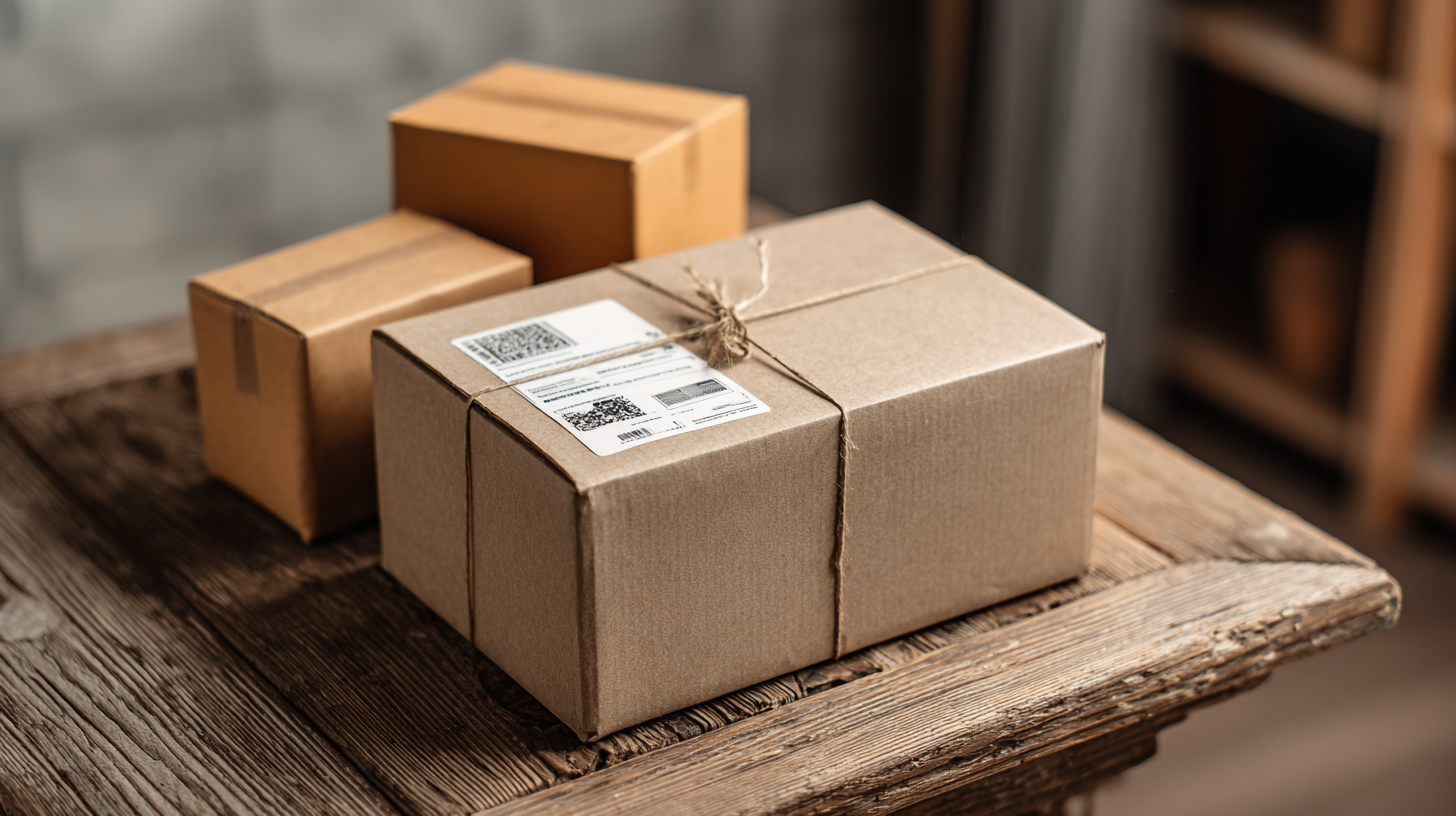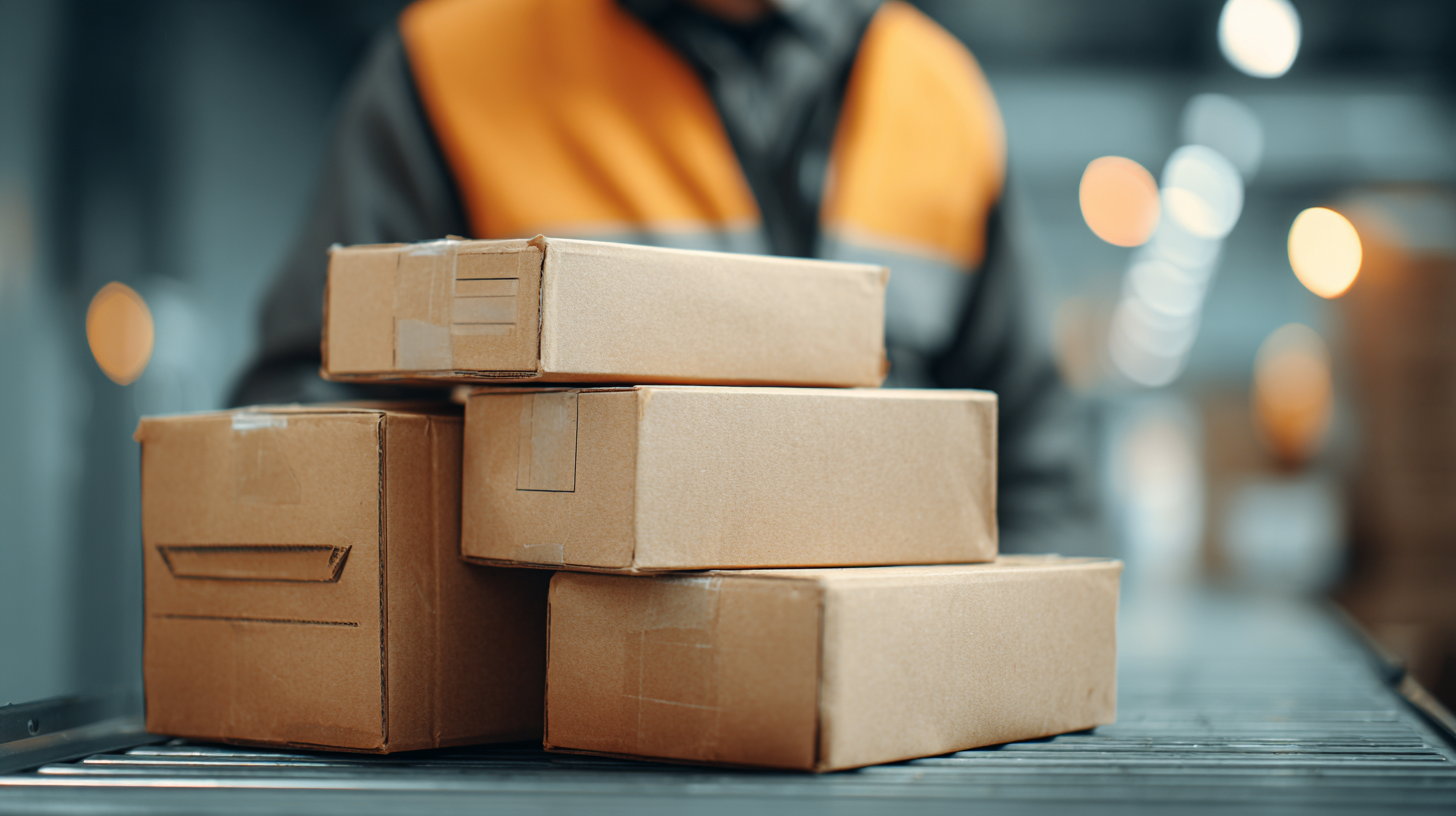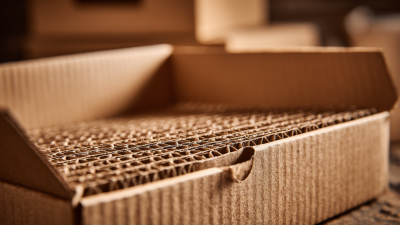Essential Tips for Choosing the Right Postal Packaging to Ensure Safe Shipments
When it comes to ensuring the safety of your shipments, selecting the right postal packaging is crucial. In today's fast-paced, e-commerce-driven world, the integrity of your products during transit can significantly impact customer satisfaction and brand reputation. With countless options available, choosing the best postal packaging can be overwhelming. From boxes to envelopes, padded mailers to custom solutions, each type offers unique benefits tailored to different shipping needs.

In this guide, we will explore essential tips for selecting postal packaging that not only protects your items but also aligns with your business goals. By understanding the various materials, sizing, and cushioning options available, you can make informed choices that ensure your products arrive at their destination in perfect condition, enhancing your overall shipping experience.
Understanding Different Types of Postal Packaging Materials
When selecting the appropriate postal packaging materials, it is essential to understand the different types available, as they play a crucial role in ensuring the safety of shipments.
 The most common materials include cardboard boxes, padded envelopes, and poly mailers.
Cardboard boxes are ideal for shipping heavier items, as they provide excellent protection against impacts and crushing during transit. They come in various sizes, allowing for customization based on the item dimensions, which helps minimize movement within the box.
The most common materials include cardboard boxes, padded envelopes, and poly mailers.
Cardboard boxes are ideal for shipping heavier items, as they provide excellent protection against impacts and crushing during transit. They come in various sizes, allowing for customization based on the item dimensions, which helps minimize movement within the box.
Padded envelopes are perfect for smaller, fragile items that require extra cushioning. These envelopes usually have a layer of bubble wrap or foam lining, safeguarding contents from bumps and drops.
On the other hand, poly mailers are lightweight, moisture-resistant bags designed for soft items such as clothing and textiles. While they offer less protection than a box, their durability and resistance to weather elements make them a suitable choice for many shipments.
Understanding how these materials function can help you make informed decisions and protect your packages throughout their journey.
Assessing the Size and Weight of Your Shipment for Optimal Packaging
When selecting the right packaging for your shipments, assessing the size and weight of your items is critical to ensuring safety and cost-effectiveness. According to logistics studies, over 30% of shipping costs can be attributed to improper packaging choices, which can lead to wasted materials and increased postage fees. Therefore, it’s important to measure your products accurately and choose packaging that closely fits their dimensions. This reduces the risk of damage during transit and enhances the overall customer experience.
 In the realm of e-commerce, lightweight and compact packaging has become increasingly important, particularly with the rise of sustainability concerns.
Reports indicate that an estimated 78% of consumers prefer brands that practice eco-friendly shipping solutions.
By opting for smaller, more efficient packages, businesses can not only save on shipping costs but also appeal to environmentally conscious consumers.
In fact, research shows that businesses that implement optimized packaging strategies see a significant reduction in their carbon footprint, further enhancing their brand image and customer loyalty.
In the realm of e-commerce, lightweight and compact packaging has become increasingly important, particularly with the rise of sustainability concerns.
Reports indicate that an estimated 78% of consumers prefer brands that practice eco-friendly shipping solutions.
By opting for smaller, more efficient packages, businesses can not only save on shipping costs but also appeal to environmentally conscious consumers.
In fact, research shows that businesses that implement optimized packaging strategies see a significant reduction in their carbon footprint, further enhancing their brand image and customer loyalty.
Evaluating Protection Levels: Choosing Between Eco-Friendly and Durable Options
 When selecting the right postal packaging, it's crucial to evaluate the protection levels offered by various materials. Eco-friendly options, such as biodegradable packing peanuts or recycled cardboard boxes, are excellent for those looking to minimize their environmental impact. However, it's essential to ensure that these materials do not compromise the safety of the items being shipped. Always consider the fragility of your items; eco-friendly packaging can be just as protective if chosen correctly.
When selecting the right postal packaging, it's crucial to evaluate the protection levels offered by various materials. Eco-friendly options, such as biodegradable packing peanuts or recycled cardboard boxes, are excellent for those looking to minimize their environmental impact. However, it's essential to ensure that these materials do not compromise the safety of the items being shipped. Always consider the fragility of your items; eco-friendly packaging can be just as protective if chosen correctly.
On the other hand, durable options like double-walled corrugated boxes or foam inserts provide enhanced protection for fragile goods. When choosing durable materials, ensure they are also recyclable or reusable to balance safety and environmental responsibility. It's wise to perform a test by placing a sample of your items in the chosen packaging and subjecting it to movements similar to those it would encounter during shipping. This simple step can save you from costly damages and returns.
Tips: Always measure your items accurately to select the right box size. Using slightly larger boxes can lead to shifting during transit, while smaller boxes may not offer adequate protection. Additionally, consider adding cushioning materials inside the box to further secure the items. Balancing eco-friendliness with durability is the key to making the best choice for shipping your products safely.
Tips for Properly Sealing and Labeling Your Packages for Safe Delivery
When preparing packages for shipment, proper sealing and labeling are crucial to ensure safe delivery. One of the most effective methods of sealing your packages is to use high-quality packing tape. It's recommended to apply at least three strips of tape along the seams of the box, ensuring that the entire opening is securely sealed. Additionally, for heavier items, consider using reinforced tape or strapping to provide extra security. Always remember that the seal should be tight enough to withstand the rigors of transport without opening, which can lead to lost or damaged contents.
Labeling your package correctly is equally important. Use clear, legible fonts and include both the sender's and recipient's addresses. It's advisable to print labels rather than writing them by hand to minimize the risk of misinterpretation. Incorporate an easily identifiable shipping label on top of the box, ensuring that it is not obscured by tape or other materials. Additionally, consider using directional labels, such as "This Side Up" or "Fragile," to alert handlers about the package's requirements. By effectively sealing and labeling your packages, you significantly enhance the chances of a smooth delivery process.
Essential Tips for Choosing the Right Postal Packaging to Ensure Safe Shipments
| Tip No. | Tip Description | Packaging Type | Sealing Method | Labeling Tips |
|---|---|---|---|---|
| 1 | Use cushioning materials to protect fragile items. | Bubble mailers or boxes | Use strong packing tape on all seams. | Write addresses clearly and include a return address. |
| 2 | Choose the right size box to minimize movement. | Rigid boxes | Seal the top and bottom flaps securely. | Use clear labels on all sides of the package. |
| 3 | Consider the weight and durability of the packaging. | Heavy duty boxes | Reinforce edges with extra tape. | Add tracking barcodes and handling instructions. |
| 4 | Use weather-resistant materials for outdoor delivery. | Weatherproof poly mailers | Use tamper-evident tape. | Ensure the label is protected from moisture. |
| 5 | Check postal regulations for size and weight limits. | Standard shipping boxes | Seal with width-wise tape for security. | Ensure compliance with all shipping guidelines. |
Navigating Postal Regulations and Restrictions for International Shipments
When it comes to international shipments, understanding postal regulations and restrictions is crucial for ensuring your packages arrive safely and without unexpected delays. Each country has its own set of rules governing what can be sent across its borders, including limitations on certain materials, weight restrictions, and customs documentation requirements. Familiarizing yourself with these regulations not only helps you avoid fines but also ensures that your package isn't held up in customs for extended periods.
In addition to knowing country-specific restrictions, it’s important to properly label and prepare your package according to international postal guidelines. This may require specific customs declarations that detail the contents of your shipment, their value, and purpose. Failure to complete these documents correctly can lead to complications or even rejection of your parcel. By staying informed about global postal standards and adhering to them diligently, you can significantly enhance the likelihood of a smooth shipping experience and successful delivery of your items.
Related Posts
-

The Future of Delivery Packaging Innovations Shaping Sustainable Shipping Solutions
-

Unlocking Efficiency: Why Cardboard Tubes for Shipping Are the Future of Sustainable Packing Solutions
-

Unlocking Creativity: Innovative Ways to Use Craft Tubes in DIY Projects
-

Innovative Ways to Utilize Cardboard Display for Effective Marketing Strategies
-

The Rise of Sustainable Packaging: How Printed Cardboard Outperforms Traditional Materials in Consumer Demand
-

Exploring the Rise of Sustainable Kraft Tubes: Why Brands Are Making the Switch in 2023
© 2025 Cardboard Tubes | Registered in England and Wales.
Company Number 2402078

